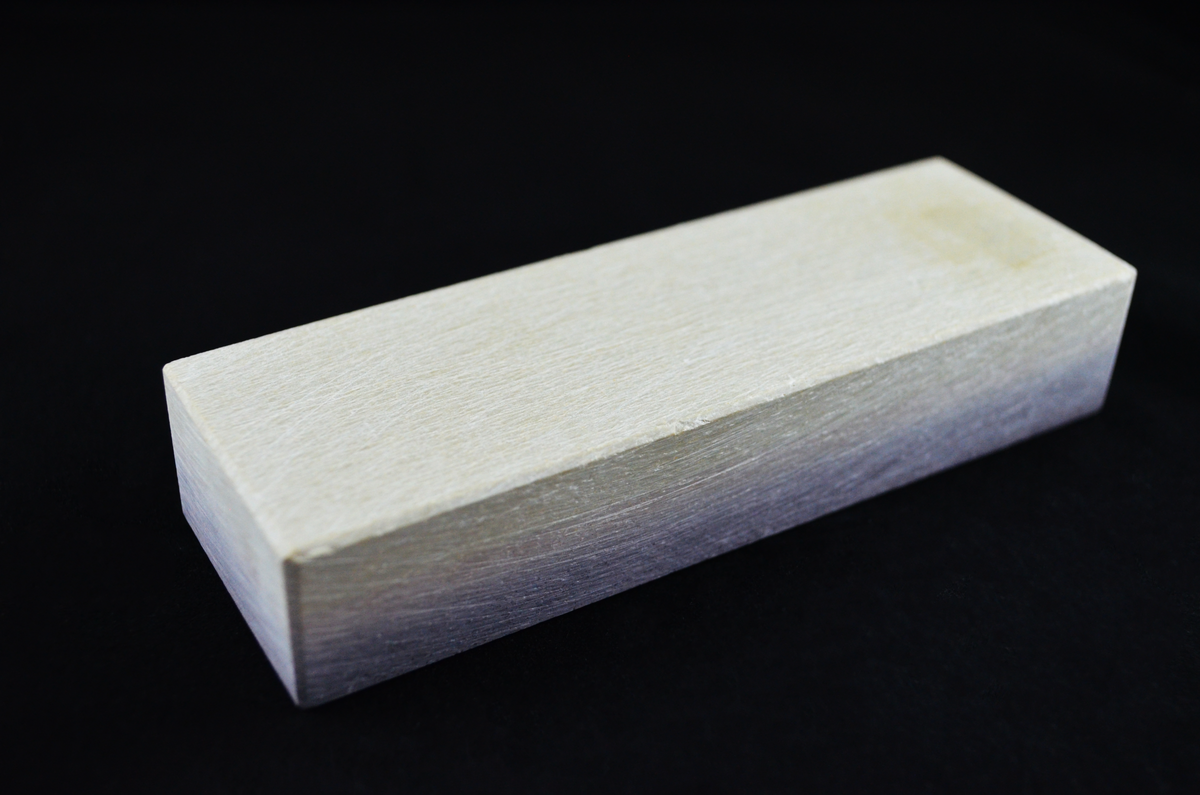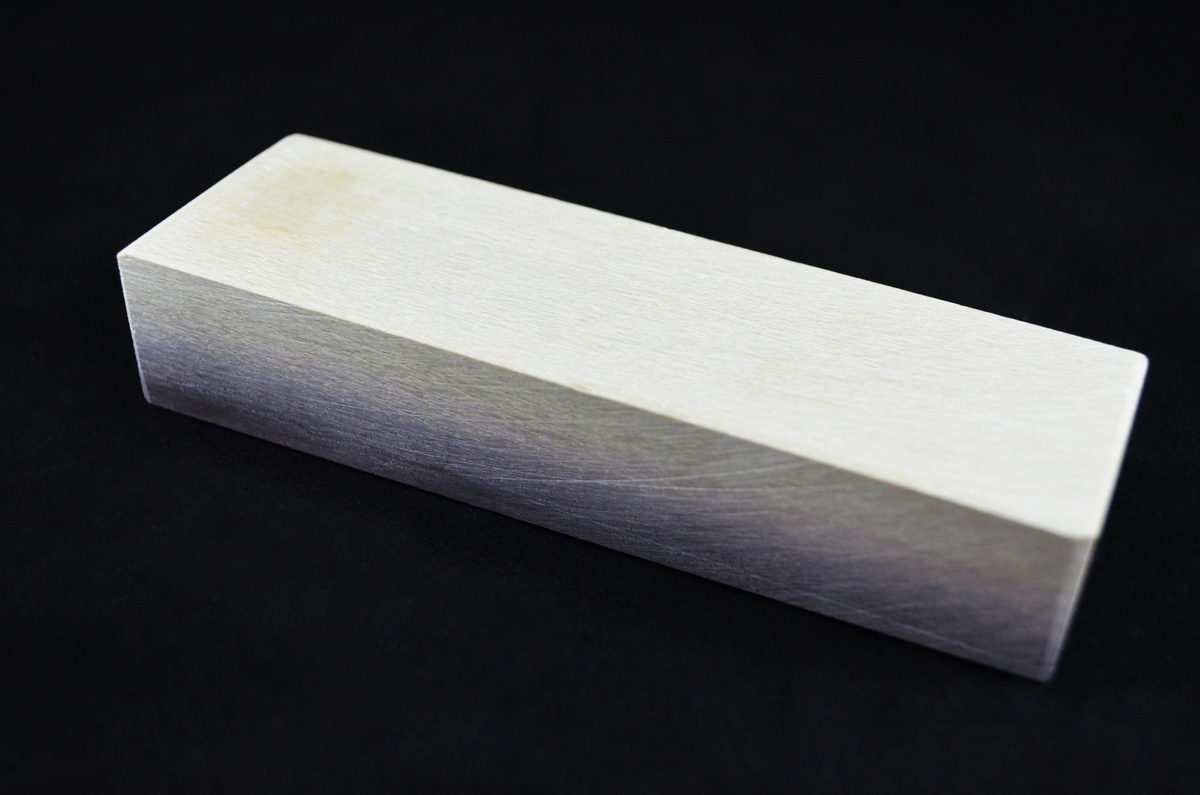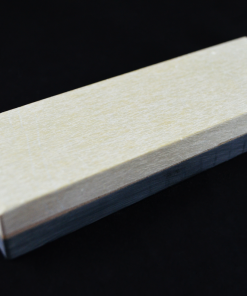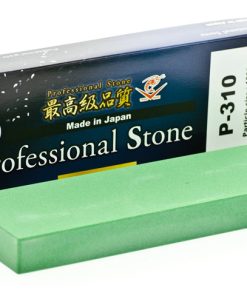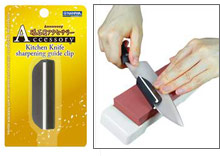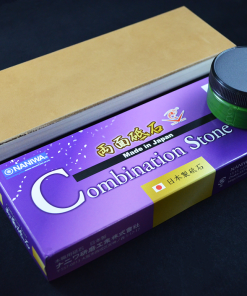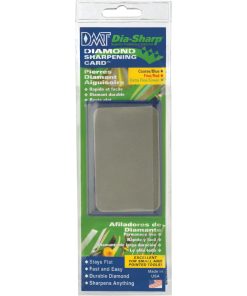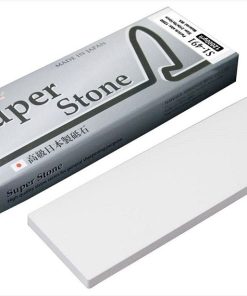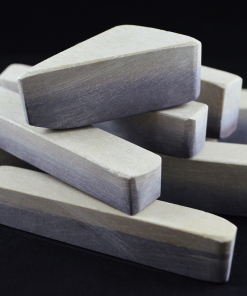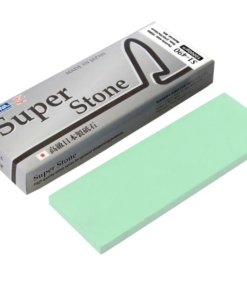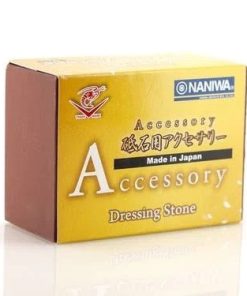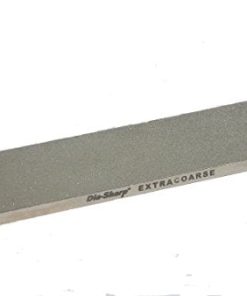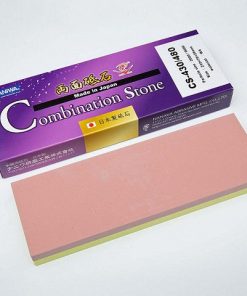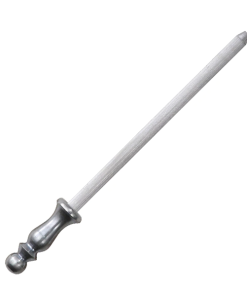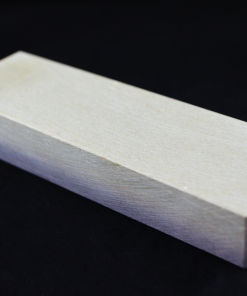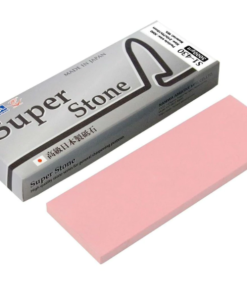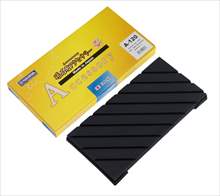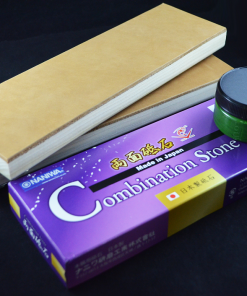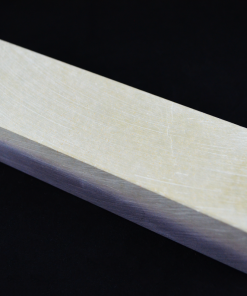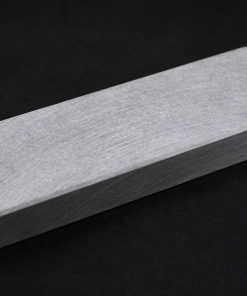Belgian Yellow Ardennes Coticule/BBW Combo Select Grade (Medium Size) N/A
$ 124,99 $ 50,00
These Ardennes Coticule select sharpening stones are available in exclusively thin layers, and feature a base made of Belgian Blue Whetstone. Sporadically, these naturally formed Coticule/BBW combinations will occur, as the Coticule layer has remained attached by nature to the BBW layer. Recognizable by the non-rectilinear transition between the Coticule and BBW layers, these stones can be identified by the wave-like transition between their two sides.
These rare whetstones can be used on both sides: preliminary sharpening on the BBW side, and fine honing with the Coticule side.
The Belgian Blue side has a grit comparable to that of a 3000 grit whetstone, using the Japanese grit system.
The Yellow Coticule contains about 30-42% of garnet crystals (roughly 10 microns in diameter), resulting in a grit comparable to an 8000 grit whetstone. These garnets are what give the Coticule its exceptional sharpening ability. Their geometric shape is that of a dodecahedron, meaning they have twelve surfaces with obtuse angles. This noteworthy characteristic causes it to be particularly effective when it comes to polishing metal. Each garnet has a diameter of roughly 10 microns, allowing them to penetrate 1 to 3 microns into the metal being sharpened. The resulting ideal geometric shape, and the large quantity of these garnets within each stone, ensure that your straight razor is sharpened not only quickly, but extremely finely!
Keep in mind, however, that these stones are natural products, and therefore no stone is 100% identical to any other; the different Coticule layers tend to be exploited and exposed to various environmental factors during formation, and this often results in slight variations in their hardness and composition. One thing that remains constant between all of these stones, however, is their formidable sharpening ability; each stone is more than capable of lasting you a lifetime!
Approximate Size: 5″ x 1.5″ x 1″
Note: coticule stones are a natural product, so some size variation will also occur. Tiny hairline cracks can sometimes be visible along the edges of the stone; this is perfectly normal for such a brittle material, and has no influence on the sharpening properties.
| Arabic | Hebrew | Polish |
| Bulgarian | Hindi | Portuguese |
| Catalan | Hmong Daw | Romanian |
| Chinese Simplified | Hungarian | Russian |
| Chinese Traditional | Indonesian | Slovak |
| Czech | Italian | Slovenian |
| Danish | Japanese | Spanish |
| Dutch | Klingon | Swedish |
| English | Korean | Thai |
| Estonian | Latvian | Turkish |
| Finnish | Lithuanian | Ukrainian |
| French | Malay | Urdu |
| German | Maltese | Vietnamese |
| Greek | Norwegian | Welsh |
| Haitian Creole | Persian |
Fast Shipping with Professional Packaging
Due to our longstanding partnership with UPS FedEx DHL, and other top international carriers, we are able to offer a variety shipping options. Our warehouse staff are extremely skilled and will package your goods in accordance to our precise and exact specifications. Your goods are thoroughly checked and properly secured before shipping. We ship to thousands clients each day across multiple countries. This shows our commitment to be the largest online retailer in the world. Warehouses and distribution centers can be located throughout Europe and the USA.
Note that orders containing more than one item are processed according to the specific item.
We will thoroughly inspect all items before sending. Most orders are now shipped within 48 hrs. The delivery time should be between 3 and 7 working days.
Returns
The stock is dynamic and we cannot completely manage it due to the fact that many parties are involved, which includes our warehouse and factory. Stocks are subject to change at any moment. Be aware that your order is out of stock when your order has been made.
The policy is 30 days. If you don't receive your product within the 30 days period, we are unable to offer a refund or an exchange.
In order to be eligible for a refund, your item must be in good condition and in the same state that you received it in. It should also be returned in its original packaging.
Related products
Sharpening Stones
Sharpening Stones
Sharpening Stones
Sharpening Stones
Sharpening Stones
Sharpening Stones
Sharpening Stones
knife sharpening
Sharpening Stones
Sharpening Stones
Sharpening Stones
Sharpening Stones
Naniwa Specialty Combination Waterstone 3000/8000 Grit Naniwa
Sharpening Stones
Sharpening Stones
Sharpening Stones
Sharpening Stones
Sharpening Stones
